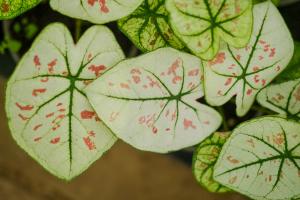What's a Perennial Plant?
Perennial plants are a popular choice among gardeners because they return year after year, bringing beauty to a garden without the need for replanting. But what exactly is a perennial plant?
Characteristics of Perennial Plants
A perennial plant is one that lives for more than two years. These plants have roots that go deep into the ground, allowing them to survive through droughts and harsh weather conditions. Perennial plants also have woody stems and branches that support the plant as it grows.
Another characteristic of perennial plants is that they have a cycle of growth and dormancy. During the growing season, the plant produces leaves, stems, and flowers. As the weather turns colder, the plant goes into a dormant phase where it sheds its leaves and prepares for winter. This cycle repeats year after year, allowing the plant to live for many years.
Benefits of Perennial Plants
There are many benefits to planting perennial plants in your garden. One of the most obvious is their ability to return year after year. This means that you don't have to spend time and money replanting your garden every year.
Perennial plants are also great for attracting pollinators like bees and butterflies to your garden. Their deep roots help to prevent erosion and can improve soil quality over time. Additionally, they provide year-round interest to your garden, with different plants blooming at different times throughout the year.
Choosing the Right Perennial Plants
There are many different types of perennial plants to choose from, so it's important to do your research before making a purchase. Consider factors like the plant's sun and soil requirements, as well as its height and bloom time.
Some popular perennial plants include peonies, daylilies, hostas, and black-eyed Susans. If you're looking for a low-maintenance option, consider planting native perennial plants that are well-suited to your local climate and ecosystem.
Caring for Perennial Plants
While perennial plants require less maintenance than annuals, they still require some care to thrive. Be sure to water your plants regularly, especially during their first few years in the ground. Fertilize your plants in the spring and fall to give them the nutrients they need to grow strong and healthy.
Finally, be sure to prune your perennial plants as needed to keep them looking their best. Deadheading spent blooms and cutting back overgrown stems can help promote new growth and keep your garden looking tidy.
In Conclusion
Perennial plants are a beautiful and low-maintenance addition to any garden. With their long lifespan and ability to attract pollinators, they are a popular choice among gardeners. By selecting the right plants and providing them with regular care, you can enjoy a vibrant and thriving garden year after year.

 how many times do yo...
how many times do yo... how many planted tre...
how many planted tre... how many pine trees ...
how many pine trees ... how many pecan trees...
how many pecan trees... how many plants comp...
how many plants comp... how many plants can ...
how many plants can ... how many plants and ...
how many plants and ... how many pepper plan...
how many pepper plan...































